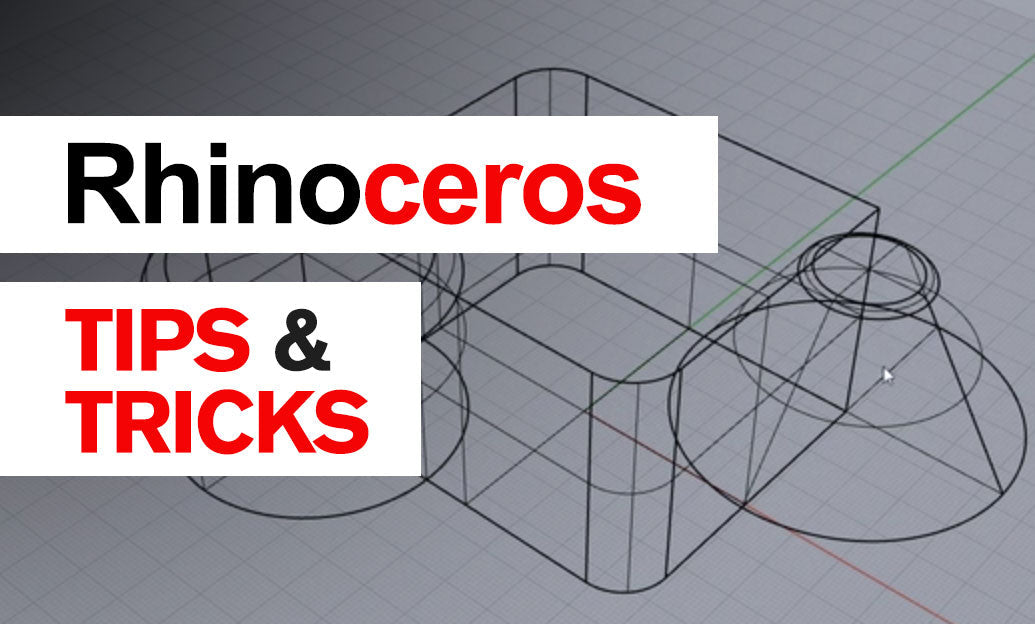Your Cart is Empty
Customer Testimonials
-
"Great customer service. The folks at Novedge were super helpful in navigating a somewhat complicated order including software upgrades and serial numbers in various stages of inactivity. They were friendly and helpful throughout the process.."
Ruben Ruckmark
"Quick & very helpful. We have been using Novedge for years and are very happy with their quick service when we need to make a purchase and excellent support resolving any issues."
Will Woodson
"Scott is the best. He reminds me about subscriptions dates, guides me in the correct direction for updates. He always responds promptly to me. He is literally the reason I continue to work with Novedge and will do so in the future."
Edward Mchugh
"Calvin Lok is “the man”. After my purchase of Sketchup 2021, he called me and provided step-by-step instructions to ease me through difficulties I was having with the setup of my new software."
Mike Borzage
Rhino 3D Tip: Converting Mesh Geometry to Solid NURBS in Rhino 3D for Enhanced Model Precision
June 09, 2025 3 min read

Converting mesh geometry into solid NURBS geometry in Rhino 3D can significantly enhance the precision, editability, and downstream usability of your models. The Solid from Mesh command is a powerful tool that facilitates this conversion. Below is a guide on how to effectively utilize this command and optimize your workflow.
Understanding the Solid from Mesh Command
The Solid from Mesh command, accessible via MeshToNURB, converts mesh objects into solid polysurfaces composed of NURBS surfaces. This is especially useful when:
- Importing mesh data from other modeling software or 3D scanning devices.
- Preparing models for fabrication processes that require solid geometry.
- Needing to perform precise modifications that are easier with NURBS geometry.
Steps to Convert Mesh to Solid
- Select the Mesh Object: Use the selection tools to choose the mesh you intend to convert.
-
Initiate Conversion: Navigate to the Solid menu and select Mesh to NURBS, or type
MeshToNURBin the command line and pressEnter. - Complete the Command: Rhino will process the mesh and create a corresponding polysurface where each mesh face is represented by a NURBS surface.
After conversion, you will have a polysurface that mirrors the original mesh geometry, but with surfaces that can be edited using Rhino's NURBS tools.
Optimizing the Conversion Process
To ensure the resulting solid is manageable and efficient:
-
Simplify the Mesh: Utilize the
ReduceMeshcommand to decrease the number of faces in the mesh without substantially altering its shape. This reduces the complexity of the resulting polysurface. -
Clean Up the Mesh: Repair any mesh irregularities using the
MeshRepaircommand to prevent issues during conversion. -
Merge Coplanar Faces: After conversion, use
MergeAllFacesto combine adjacent coplanar surfaces, simplifying the polysurface.
Considerations When Converting
Be aware of the following potential challenges:
- Model Complexity: High-polygon meshes result in polysurfaces with a large number of faces, which can slow down your system and make further editing cumbersome.
-
Data Accuracy: Tiny discrepancies may occur during conversion. It's advisable to use the
Checkcommand to inspect the integrity of the polysurface andShowEdgesto identify any naked or non-manifold edges. - Suitability for Purpose: Determine if converting to a solid is necessary. For tasks like rendering or visual presentations, working directly with meshes might suffice.
Alternative Methods
In certain scenarios, reconstructing the model using NURBS modeling techniques may be more efficient:
-
Reference Modeling: Use the existing mesh as a reference backdrop. Enable
SnapToMeshto help draw accurate curves that trace significant features. -
Advanced Surfacing: Create clean, smooth surfaces using commands like
Loft,Sweep1,Sweep2, orNetworkSrf, which can yield higher-quality models suitable for precision manufacturing. - Reverse Engineering Plugins: Consider using specialized plugins or tools designed for reverse engineering meshes into NURBS surfaces.
Additional Tips
Enhance your workflow with these tips:
- Layer Management: Organize your original meshes and converted solids on separate layers for better visibility and control.
- Save Incrementally: Keep versions of your model at different stages to safeguard against data loss and to track changes.
- System Performance: Close unnecessary applications and consider adjusting Rhino's display settings to optimize performance when working with complex models.
Additional Resources
For further learning and access to professional-grade tools, visit NOVEDGE, the leading online store for design software. NOVEDGE offers competitive pricing and expert support for Rhino 3D and a wide range of plugins that can enhance your 3D modeling capabilities.
Conclusion
The Solid from Mesh command is a valuable asset in Rhino 3D when you need to convert mesh data into editable NURBS solids. By optimizing your meshes beforehand and considering alternative modeling strategies, you can effectively integrate mesh geometry into your solid modeling workflow, leading to more precise and high-quality designs.
You can find all the Rhino products on the NOVEDGE web site at this page.
Also in Design News

Rhino 3D Tip: HDRI Workflow for Realistic Lighting and Fast Look‑Dev in Rhino
December 09, 2025 2 min read
Read More
Cinema 4D Tip: Controlled Chamfers and Edge Weighting for Consistent Subdivision Bevels
December 09, 2025 2 min read
Read MoreSubscribe
Sign up to get the latest on sales, new releases and more …



